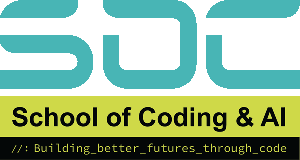Introduction
Are you interested in becoming a frontend developer roadmap but don’t know where to start? With the ever-changing world of web development, the path might be overwhelming. But don’t worry, we have you covered! This comprehensive front-end developer roadmap will walk you through every critical skill and technology you’ll need to master. Whether you’re starting out or trying to improve your abilities, this step-by-step tutorial will help you become a sought-after front-end developer in no time.
What is frontend development?
Frontend development focuses on the visual and interactive components of a website. It entails creating and coding everything users see and interact with, including buttons, menus, animations, and layouts. A frontend developer ensures that a website is not only visually appealing but also user-friendly and responsive to various devices.
Why Become a Front-end Developer?
- High demand: Companies are continuously seeking competent front-end developers.
- Great pay prospects: In the United Kingdom, front-end developers make an average of £40,000 or more per year.
- Creative and technical combination: It blends design with programming, making it excellent for people who value both creativity and rationality.
- Remote job options: Many firms provide flexible working arrangements.
Exciting job advancement: There are always new technologies and frameworks to master.
Frontend Developer Roadmap: Step-by-Step Guide
1. Master the fundamentals:
Before delving into sophisticated frameworks, you must a solid foundation in:
- HTML (HyperText Markup Language): This is the foundation of any webpage. Understand semantic HTML, forms, tables, and accessibility best practices.
- CSS (Cascading Style Sheets): This is a tool that helps you style your web pages. Concentrate on Flexbox, Grid, animations, and responsive design concepts.
- JavaScript (JS): The programming language of the web. Start with variables, loops, functions, and DOM manipulation.
Pro Tip: Use resources like MDN Web Docs, freeCodeCamp, and W3Schools to strengthen your fundamentals.
2. Learn Version Control (Git & GitHub)
Version control solutions, such as Git, enable engineers to monitor changes and interact efficiently. GitHub is a platform for storing and sharing projects. Key ideas include commits, branches, pull requests, merging, and dispute resolution.
Also Read – Why is Coding important for Students?
3. Understand Responsive Web Design and CSS Frameworks
Users visit websites from a variety of devices, therefore your designs must be responsive. Learn:
- Media Queries – Change styles according to screen size.
- CSS Frameworks (Bootstrap, Tailwind CSS) – Pre-designed components help to speed up development.
Preprocessors (SASS, LESS): These make CSS more manageable by introducing variables and nesting.
4. Master JavaScript & Modern ES6+ Features
Once you’re familiar with fundamental JavaScript, investigate current ES6+ capabilities such as:
- Arrow functions.
- Template Literals
- Destructuring
- Spread and rest operators.
- Async/Await for dealing with asynchronous operations.
Pro Tip: Try coding challenges on sites like Codewars, LeetCode, and JavaScript.
5. Learn JavaScript framework, such as React, Vue, or Angular
JavaScript frameworks assist in developing scalable and efficient apps. The most popular ones include:
- Facebook’s React.js enables component-based UI creation.
- Vue.js is beginner-friendly and has excellent documentation.
- Angular (by Google) is a strong framework for corporate applications.
Pro Tip: React.js is the most popular and has a robust employment market.
6. Understand State Management
As applications grow, managing the state becomes crucial. Learn:
- React Context API – Built-in state management.
- Redux – A predictable state container.
MobX, Zustand – Alternative state management tools.
7. Explore APIs & Backend Basics
Most current programs communicate with backends via APIs. Learn how:
- Fetch data using Fetch API and Axios.
- Work with RESTful APIs and GraphQL.
- Understand the basics of Node.JavaScript and Express.js ideas
Pro tip: For practice, create a basic app that retrieves data from an API.
8. Improve your performance and debugging skills
- A sluggish website may drive people away. Focus on optimising pictures and assets through lazy loading and compression.
- Minifying CSS and JavaScript files
- Using browser DevTools to troubleshoot and enhance performance.
9. Learn about testing and deployment
Testing includes unit testing with Jest and the React Testing Library.
- Deployment: You may host your projects on GitHub Pages, Netlify, or Vercel.
- Continuous integration and deployment (CI/CD): Automate deployments using GitHub Actions.
10. Build Real-World Projects & Create a Portfolio
Practical experience is essential for landing a job. Take on undertakings like as:
- A personal portfolio webpage.
- A to-do list application
- A weather app with an API.
- An e-commerce front-end clone.
Pro Tip: Contribute to open-source projects on GitHub to obtain practical experience.
Conclusion
Frontend development roadmap is a dynamic, ever-changing area that offers several job prospects. By following this road map and constantly honing your abilities, you’ll be well on your way to becoming a competent frontend developer. Remember, consistency and practice are essential! Begin today, make projects, and share your abilities with the world. Ready to start your frontend journey? Check out our courses at SOC Learning to obtain practical experience and advance your profession!
Frequently Asked Questions
Making websites appear good is only one aspect of front-end development; another is making sure that user experience, accessibility, and performance are always prioritised. By following best practices, developers can create more efficient and user-friendly websites while writing cleaner, more maintainable code.
Among the most important best practices are:
- Write code that is clear and understandable: Making proper use of HTML elements (such as <header>, <section>, <article>) ensures that In addition to being simpler to maintain, code is also easier for search engines and assistive technologies to access.
- Put performance first: To improve website load times, which are essential for user retention and SEO ranking, optimise images, minify CSS and JavaScript files, and use lazy loading.
- Assure accessibility (a11y): Including keyboard navigation, appropriate contrast ratios, and screen reader assistance aids in the development of inclusive websites that are usable by everybody.
- Adhere to the principles of responsive design: Designing with numerous screen sizes and devices in mind, using fluid grids and adaptable layouts is essential, given the continued dominance of mobile traffic.
- Use version control: To keep track of changes, work with teams, and avoid code loss, tools such as Git are crucial.
- Keep up with modern frameworks: React, Vue, and Angular continue to evolve, so adopting the latest tools and best practices ensures projects remain competitive.
- Test thoroughly: Regular testing with tools such as Jest, Cypress, or browser developer tools guarantees functionality across devices and browsers.
In short, front-end best practices are about balancing aesthetics with usability, performance, and long-term sustainability.
A fulfilling professional path with several potential for advancement as abilities and experience increase is front-end development. Usually, the following phases comprise the journey:
- Junior Front-End Programmer: Under supervision, entry-level developers concentrate on learning HTML, CSS, and JavaScript. This phase develops hands-on coding and debugging skills.
- Mid-Level Front-End Developer: After two to three years of experience, developers can take on more challenging projects, become more independent, and possibly specialise in frameworks like Angular or React. They also start to influence architectural choices.
- Senior Front-End Developer: These experts oversee projects, guide less experienced developers, and make sure best practices are adhered to. They are in charge of maximising overall design implementation, scalability, and performance.
- Lead Front-End Developer / Front-End Architect – At this point, experts concentrate more on developing technical strategies, managing complex systems, and making sure the front-end and back-end technologies work together harmoniously than they do on day-to-day coding.
- Advance into Specialisations: Depending on their inclinations, front-end developers can pursue careers in engineering management, full-stack development, or UX/UI design. Some also venture into specialised fields like AI-powered interfaces, Web3, or mobile app development.
Continuous learning is crucial given how quickly technology is developing, yet there are plenty of growth prospects and a clear career path.
Yes, front-end developers are in great demand in the UK, and this demand will only increase as more businesses undergo digital transformation. Technology, healthcare, education, retail, and finance companies are all making significant investments in digital platforms that need to be developed by professionals to provide seamless, interesting, and safe user experiences.
Among the main elements influencing demand are:
- Digital economy first: Businesses want developers who can create quick, responsive, and visually appealing websites and applications since e-commerce, fintech, and online services are growing rapidly.
- Growth of online learning and remote work: More platforms for education and collaboration are being developed, necessitating a high level of front-end proficiency.
- Emphasis on diversity and accessibility: Front-end developers who understand WCAG compliance are in more demand as UK companies are being forced to adhere to accessibility requirements.
- Tech hub growth: Successful start-ups and tech ecosystems may be found in cities like London, Manchester, Birmingham, and Edinburgh, which open up work prospects for developers of all skill levels.
Front-end developers are frequently named as one of the most in-demand IT jobs in the UK, according to industry studies. It’s a great time to pursue this career path because entry-level roles typically pay between £30,000 and £65,000+, and senior positions pay considerably more. Freelance work also pays even more.
It all relies on your devotion. With full-time education, you can be job-ready in 6-12 months. Part-time learners may take longer.
No! Many developers are self-taught via online classes, bootcamps, and hands-on experience.
Follow industry-related news, blogs, and communities such as Dev.to, Hashnode, and Front-end Masters.
Absolutely! Many front-end engineers begin with freelancing assignments on services such as Upwork and Fiverr to gain expertise.








